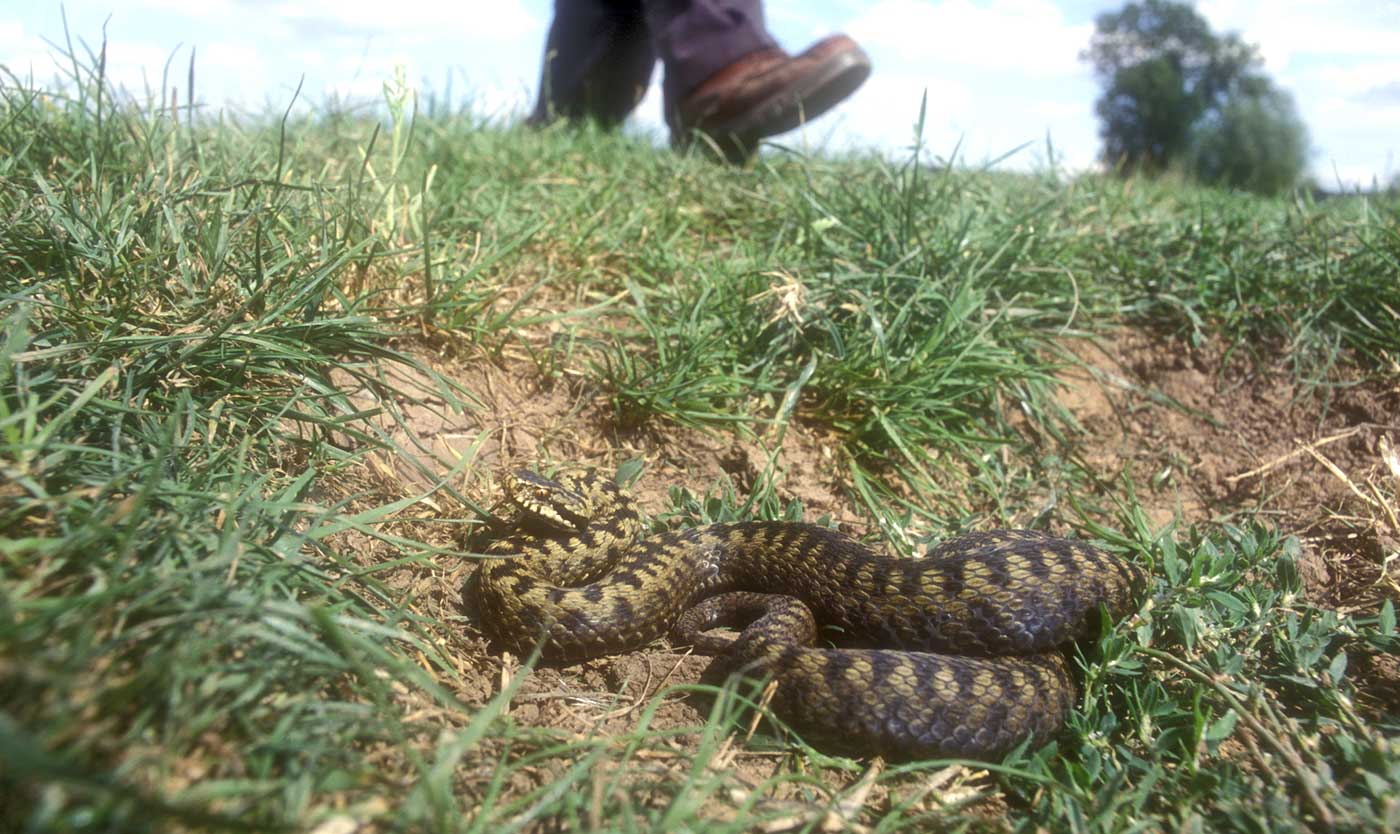For many, the warm spring and summer weather means more time outdoors including hanging out in the yard, hiking, camping, and other activities. While you’re enjoying the fresh air and sunshine, don’t forget that you may be sharing the space with others – like snakes and spiders. While most snake and spider bites are not life-threatening, severe symptoms and complications can occur. Understanding which bites require immediate medical attention is crucial – here’s what you need to know about snake and spider bites that warrant a trip to the emergency department:
 Snake Bites:
Snake Bites:
- Venomous Snakes: In North American regions where venomous snakes like rattlesnakes, copperheads, and coral snakes are prevalent, any snake bite should be treated as potentially venomous until proven otherwise. Venomous snake bites are characterized by two puncture marks from the snake’s fangs (see photo), though not all venomous snakes leave distinct marks. Read more about the top 10 venomous snakes in North America from Reptiles Magazine (with photos).
- Symptoms: Symptoms of a venomous snake bite can vary depending on the type of snake and the amount of venom injected. Per the Centers for Disease Control and Prevention, common symptoms include severe pain at the site of the bite, swelling, redness, bruising, nausea, vomiting, dizziness, weakness, difficulty breathing, and changes in heart rate.
- Seek Emergency Care: If you or someone else is bitten by a snake, especially a venomous one, seek emergency medical attention immediately. Even if the bite appears minor, it’s essential to receive prompt treatment to prevent complications. Do not attempt to capture or kill the snake for identification purposes, as this can increase the risk of further injury.
 Spider Bites:
Spider Bites:
- Black Widow Spider: Black widow spiders are known for their distinctive red hourglass marking on the underside of their abdomen. According to WebMD, bites from black widow spiders can cause severe pain and muscle cramps, especially in the abdomen and back. Other severe symptoms may include nausea, vomiting, sweating, and difficulty
breathing. Read more about black widows from Medical News Today (includes photo). - Brown Recluse Spider: Brown recluse spiders are identified by their violin-shaped markings on the cephalothorax (combined head and thorax). Along with pain around the bite area, back and overall body, bites from brown recluse spiders can result in tissue necrosis, where the skin around the bite becomes discolored, blistered, and eventually forms an ulcer. The Cleveland Clinic highlights severe systemic symptoms such as rash, fever, vomiting, chills, and difficulty sleeping that necessitate immediate medical attention. Read more about brown recluses on Health.com (includes photo).
- Other symptoms: In addition to the symptoms outlined above, other serious spider bite symptoms include rapidly spreading redness or swelling and intense chest pain.
- Seek Emergency Care: If you suspect a bite from a black widow or brown recluse spider, or if you experience severe symptoms following a bite from any spider, seek emergency medical attention immediately. Prompt treatment with antivenom or other supportive measures can help alleviate symptoms and prevent complications.
Recap
While the majority of snake and spider bites result in mild symptoms that can be managed at home, certain bites warrant urgent medical attention. So, if you or someone else encounters serious symptoms post-bite or suspects exposure to venomous creatures, make sure to seek help fast so you can get back out there and enjoy the Great Outdoors once again.






Responses